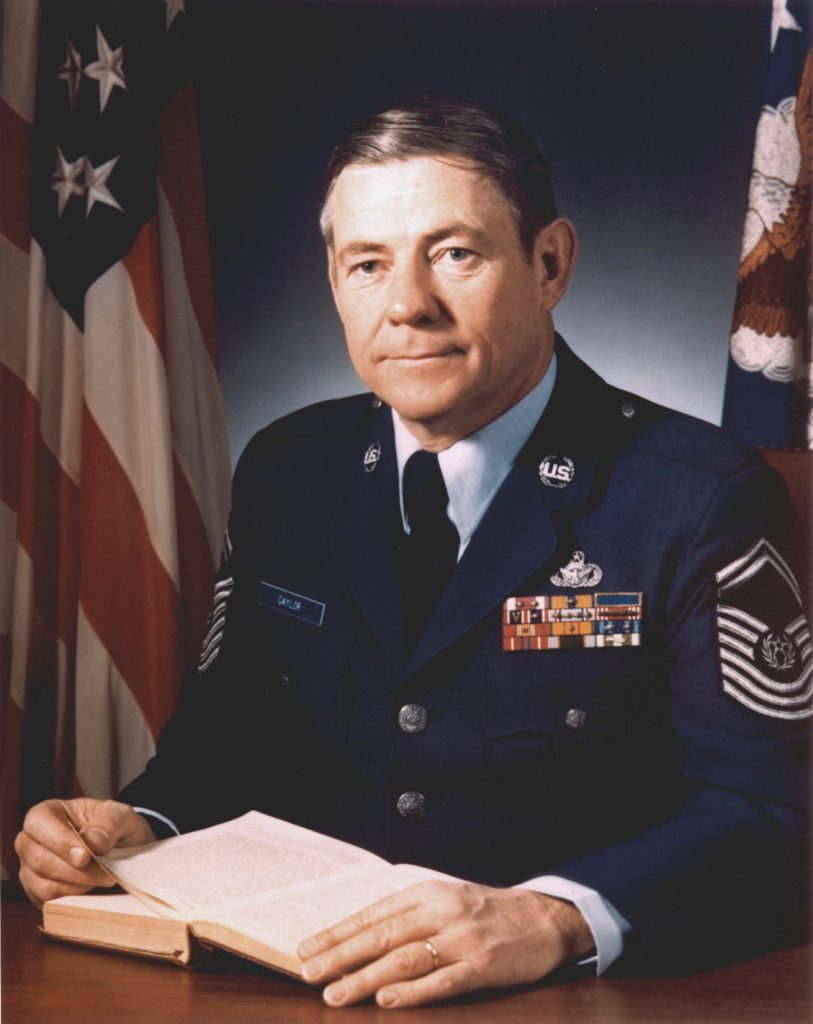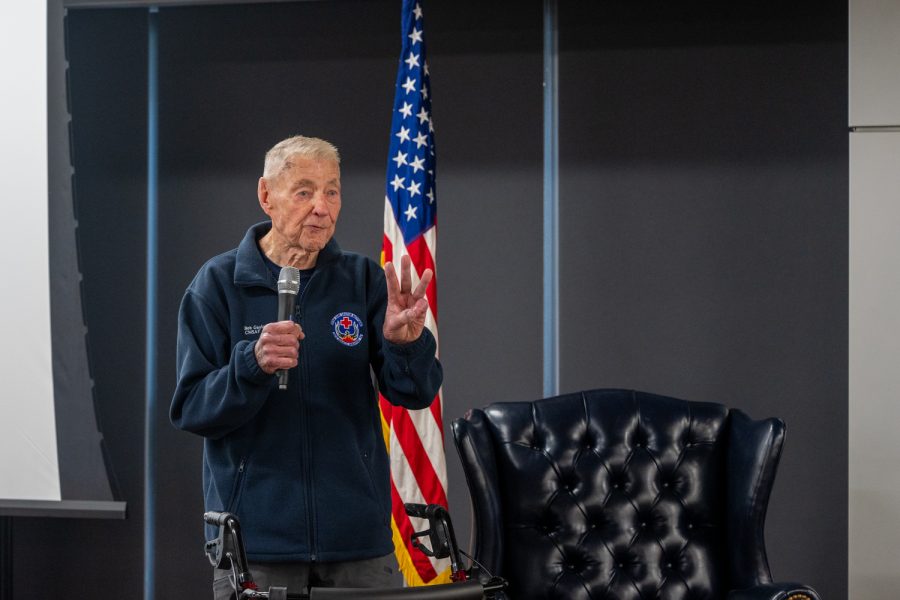Robert D. Gaylor, who served from 1977-1979 as the fifth Chief Master Sergeant of the Air Force, died Jan. 17. He was 92.
Gaylor was appointed to the service’s top enlisted job by chief of staff Gen. David C. Jones—for whom he had served as senior enlisted advisor in U.S. Air Forces in Europe. He also advised Jones’ successor, Gen. Lew Allen Jr., and Air Force Secretary John C. Stetson.
During his tenure as CMSAF, Gaylor focused on leadership training and development in the noncommissioned officer corps—working to open 70 leadership schools across the Air Force—as well as reducing management levels and bread-and-butter issues, such as assignment choice and travel for enlisted families.
He was also instrumental in bringing about uniforms for pregnant women, a non-trivial matter—the Air Force was suffering a brain drain of mid-career women in the mid-1970s because they had no way to serve in uniform. Retention of women rose significantly afterwards.
After his retirement in 1979, Gaylor continued to talk to Airmen across the Air Force about leadership and his experiences in the service, until just a few months before his death. In retirement, he taught leadership and management at USAA, a private insurance firm that focuses on Active-Duty and veteran customers.
Gaylor entered the Air Force in 1948, just a year after the service was created, and after graduation from basic training, chose to be a security policeman. In his early career he was assigned to bases in Texas, Mississippi, Louisiana, and South Korea. In a 2017 interview, Gaylor said that only a small handful of those in his basic training class had a high school diploma, and having one helped him excel in his early career.
He attained the rank of master sergeant in 1956 at the age of 25, after just seven years in the service. In the interview, Gaylor said he never had any formal professional military education before becoming a senior master sergeant, and observed that in those days, if a command had no NCO academy, its NCOs went without. He was later determined that Airmen have equal access to PME.
In 1958, master sergeant was the highest enlisted rank in the service, and Gaylor wanted to advance, so he applied to become a warrant officer. His application was returned without action, but he was encouraged to stay in service because the Air Force would be creating two further enlisted ranks: senior master sergeant and chief master sergeant. He reached the new highest enlisted rank in 1968.

When NCO academies were created, Gaylor was invited to be among the first instructors.
During the Vietnam War, Gaylor served in Thailand, back in the military police field, after which he went to Strategic Air Command and helped re-establish its NCO academy.
At USAFE, starting in 1971, he traveled around European bases teaching management techniques. The following year he established the USAFE Command Management and Leadership Center, an in-residence 60-hour NCO course. The year after that, Jones chose him as the USAFE Senior Enlisted Advisor.
At the highest ranks, he often had to invent his own duties. While at the Personnel Center, he assigned himself the job of being a leadership mentor and evangelist for the Air Force, traveling widely across the service, and creating NCO academies in as many organizations as possible.
Speaking at Joint Base San Antonio-Lackland in August 2023, Gaylor told Airmen that the “three words” that are key to an Air Force career are “‘aptitude’ and ‘attitude’…which leads to ‘opportunity.’”
His formula for success, he said, was “every day, every day, every day: attitude, aptitude, head on straight, team player. There is no magic formula. It is a simple process.”
Gerald R. Murray, the 14th Chief Master Sergeant of the Air Force from 2002-2006, said Gaylor was “the most beloved” among the former CMSAFs and had an unrivaled “love for our Airmen and Guardians, and families.”
Gaylor was “a gifted orator” who, with “ever-refreshing messages and delightful humor always uplifted the spirit of all who were in his company, or had the opportunity to hear him speak, whether individually or in a large audience,” Murray said.
Gaylor “remained an active Airman … leader, advocate, supporter, mentor and dear friend to the very last day of his life, leaving a legacy like no other before or after. A legend among us, he was truly one of a kind,” Murray added.
In 2006, the NCO Leadership Academy at Lackland Air Force Base, Texas, was named in Gaylor’s honor.
